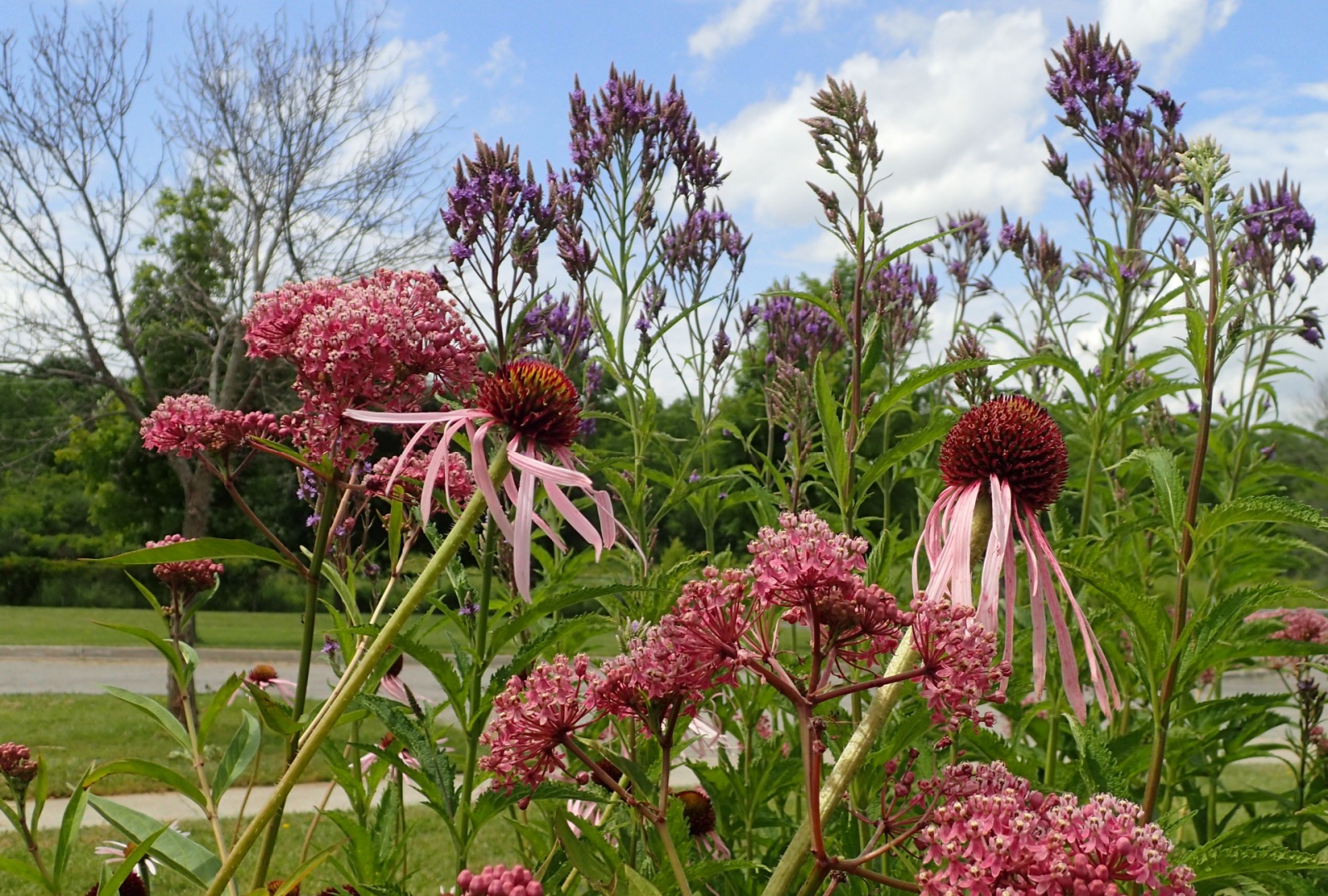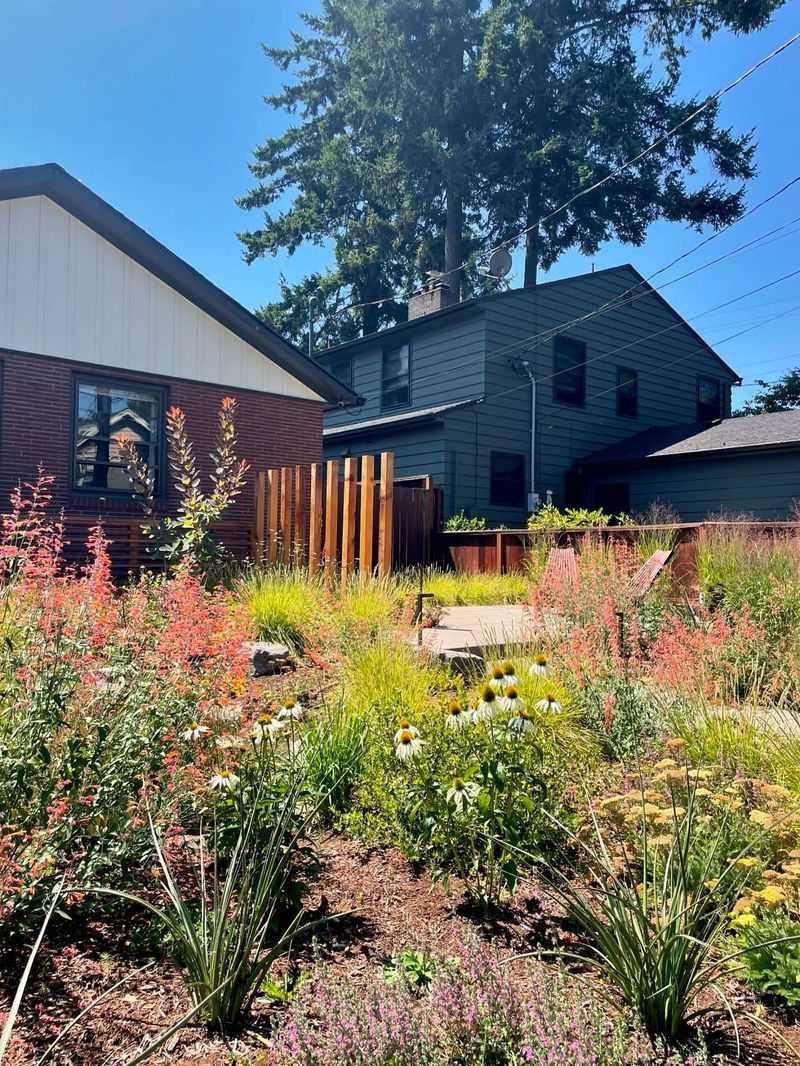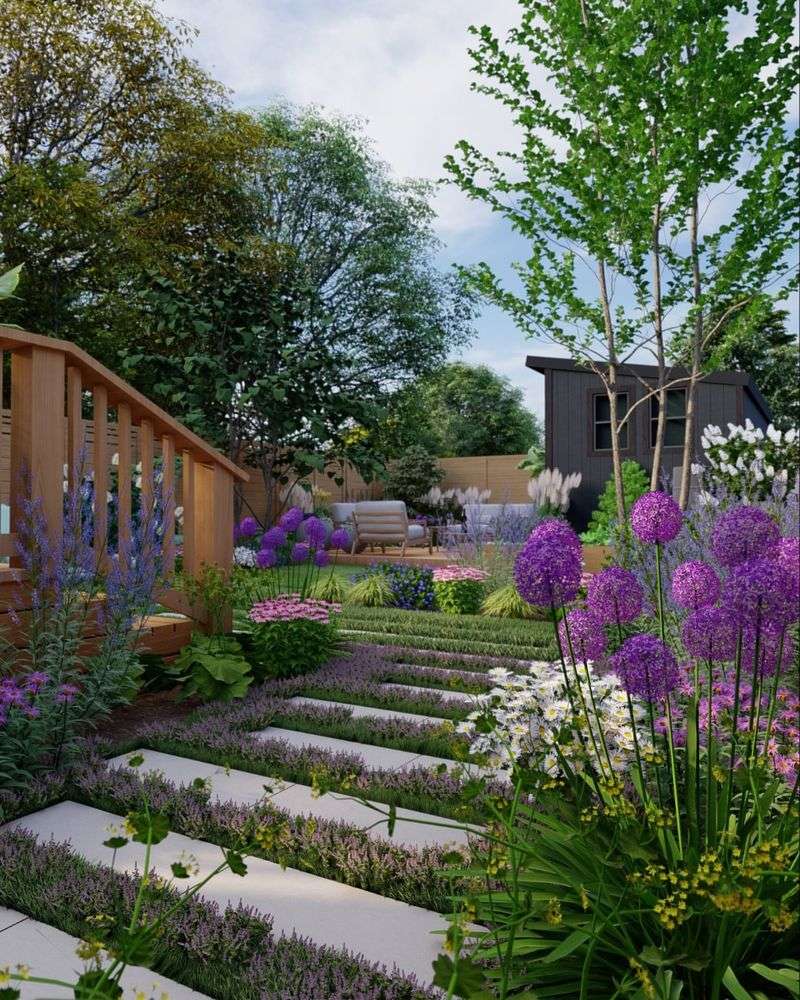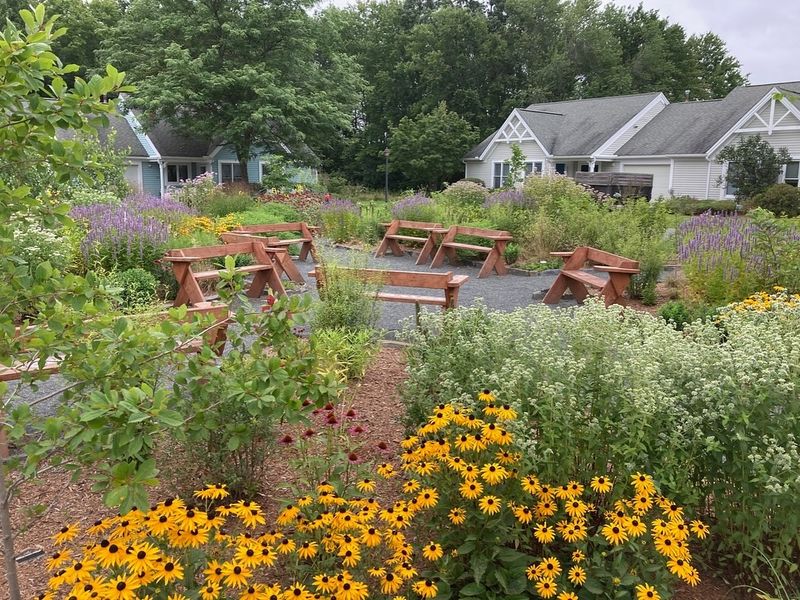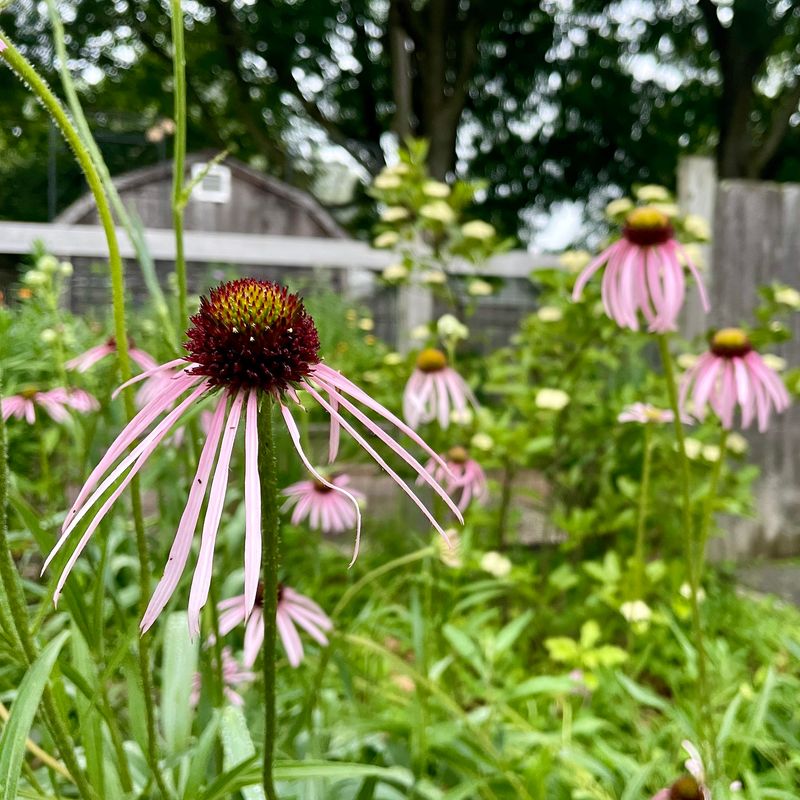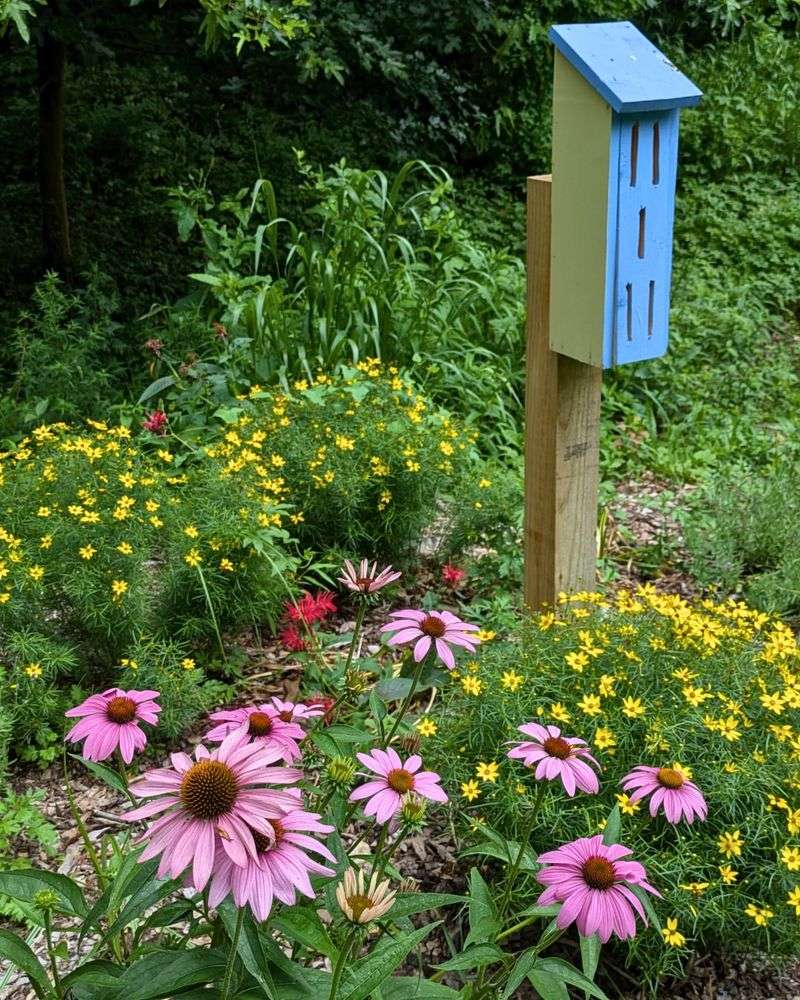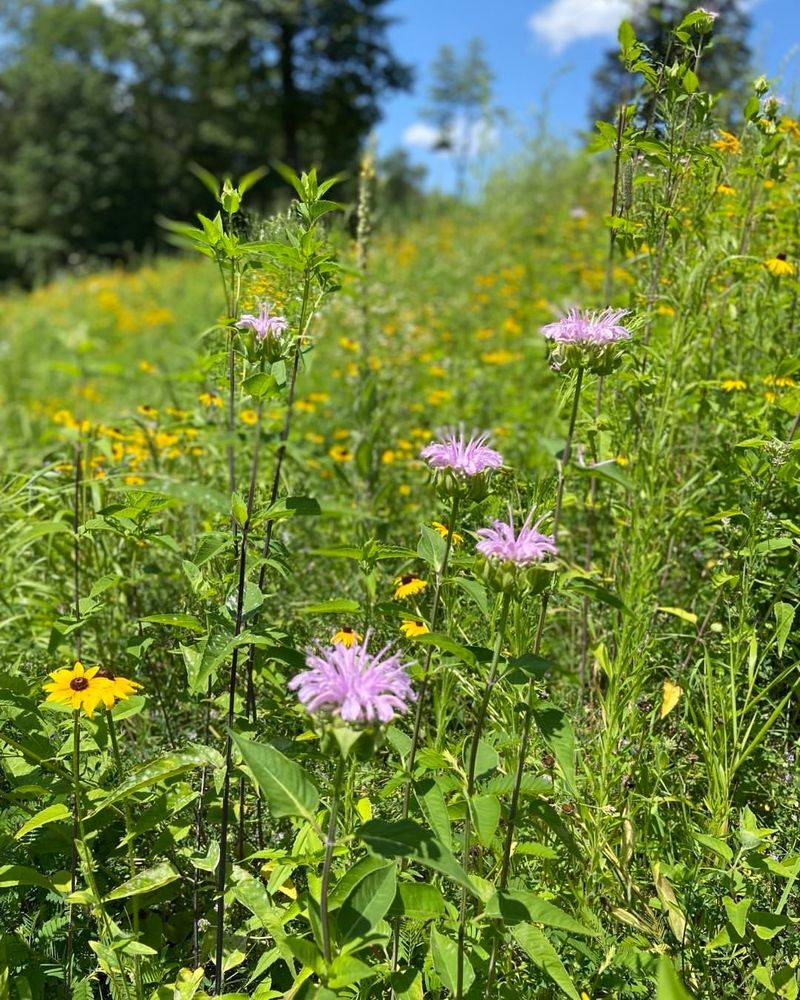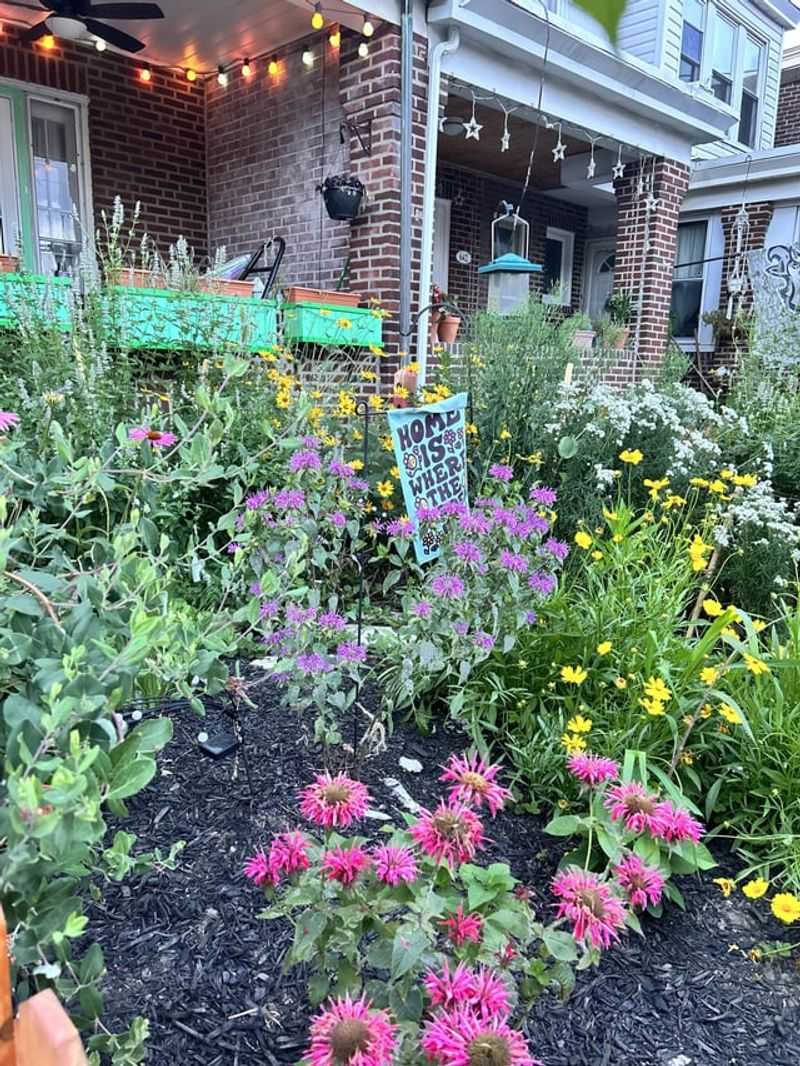Louisville gardens can become vital wildlife highways by creating pollinator corridors with native plants. These pathways help butterflies, bees, and other pollinators travel safely through our neighborhoods while finding food and shelter.
Planting coneflowers and milkweed creates perfect stopping points for these important insects, especially monarch butterflies that depend on milkweed for survival.
1. Front Yard Border Transformations
Replace that boring grass strip between your sidewalk and street with a vibrant pollinator paradise! Coneflowers provide bright purple blooms while milkweed offers crucial monarch butterfly habitat. The narrow space works perfectly for creating a continuous pathway connecting to neighbors’ gardens.
Louisville’s sunny climate helps these native plants thrive with minimal watering once established. Local pollinators will flock to your yard, creating a living, buzzing border that’s far more interesting than plain grass.
2. Backyard Fence Line Gardens
Fence lines offer perfect spaces for pollinator plantings! Mixing tall milkweed varieties with shorter coneflowers creates visual interest while utilizing often-neglected yard areas. The fence provides wind protection and support for climbing pollinator plants like native honeysuckle that complement your coneflower and milkweed base.
Morning sun exposure along east-facing fences creates ideal growing conditions. Neighbors might even be inspired to plant their side too, doubling your pollinator corridor’s impact!
3. Community Cul-de-sac Islands
Got a grassy island in your neighborhood cul-de-sac? Rally neighbors to transform it into a stunning pollinator hub!
These often-overlooked spaces can become neighborhood focal points with colorful coneflowers and milkweed. The circular shape allows pollinators to approach from any direction. Louisville’s Parks
Department might even provide support through their community greening initiatives.
Children will love watching butterflies while learning about native plants and ecology right in their own neighborhood.
4. Rain Garden Pollinator Havens
Louisville’s frequent summer storms create perfect conditions for rain gardens! These shallow depressions collect runoff while providing ideal growing conditions for moisture-loving native plants. Position your rain garden where downspouts empty or where water naturally collects.
Add swamp milkweed and moisture-tolerant coneflower varieties that thrive in occasionally wet soil. You’ll manage stormwater runoff while creating pollinator habitat – solving two problems with one beautiful garden!
5. Mailbox Pollinator Pockets
Transform that patch around your mailbox into a pollinator pitstop! Mail carriers will enjoy daily butterfly sightings while delivering your letters and packages.
Choose compact coneflower varieties like ‘Pixie Meadowbrite’ paired with butterfly milkweed that stays manageable in size. The sunny exposure most mailboxes receive is perfect for these heat-loving natives.
When neighbors see your beautiful mailbox garden, they might create their own, forming a string of pollinator pockets down your street!
6. Driveway Prairie Strips
Long driveways offer amazing opportunities for pollinator corridors! Plant narrow strips of coneflowers and milkweed along both sides to create a flowering runway that guides butterflies into your yard.
The heat reflected from your driveway actually helps these prairie natives thrive. Choose varieties with different blooming times to provide season-long nectar sources for hungry pollinators.
Arriving home becomes a magical experience as butterflies flutter alongside your car!
7. Alleyway Wildflower Walks
Many Louisville neighborhoods have underutilized alleyways perfect for community pollinator projects. These narrow passages can become flowering corridors connecting backyards and green spaces. Work with neighbors to plant sections with coneflowers and milkweed varieties that tolerate partial shade if your alley doesn’t receive full sun.
The informal nature of alleys suits the slightly wild growth habit of these native plants. Walking down your transformed alley becomes a nature experience rather than just a shortcut!
8. School Bus Stop Gardens
Create a living classroom where children gather daily! Bus stop pollinator gardens with coneflowers and milkweed offer educational opportunities while beautifying neighborhood gathering spots. Kids naturally observe the butterfly life cycle while waiting for their bus.
Choose non-toxic varieties and maintain clear sightlines for safety. Label plants with fun facts to spark curiosity. Louisville’s Jefferson County Public Schools might even support your project through their environmental education initiatives!

